“And if there is occasionally an individual who is troubled with some convictions that his bread is not quite what it should be, he knows not how to remedy the difficulty; for it is a serious truth, that, although nearly every human being in civilized life eats bread of some kind or other, yet scarcely any one has sufficient knowledge of the true principles and processes concerned in bread-making, and of the actual causes of the bad qualities of bread, to know how, with any degree of certainty, to avoid bad and secure good bread.”
– Reverend Sylvester Graham, presbyterian minister, inventor of graham flour and crackers
With all due respect to the Rev. Graham, much of what he wrote about bread, particularly in his Treatise on Bread, and Bread Making had a bit too much to do with his views that eating bread should be somewhat of a chore. In fact, the 1837 publication of this treatise led to a riot on the part of local bakers in Boston, not surprisingly, directed at him when he called for no leavening agents or additives. Still, I’ve always been a huge fan of graham flour based breads and of course, the crackers of the same name. Unfortunately, neither is available here in Buenos Aires, but you can approximate the flour with a combination of a coarser ground whole wheat flour and toasted wheat germ. If you can’t find the coarser grind of whole wheat flour (with lots of flecks of bran in it), use regular whole wheat flour and add a couple of tablespoons of bran to it.
Now, setting aside whatever might have been his original bread recipe, over the years one of my favorites comes from the 1899 Ann Arbor Cook Book, from my hometown – though a few years before I showed up. The recipe, like most of that era, is not laid out in the fashion to which we’ve become accustomed – with details of ingredients, the way to prep them and how to put it all together. That’s a modern day conceit that has mostly to do with the fact that in those days, all the basics were just part of how (mostly women) folk grew up – they just kind of knew all those things. The use of the baking soda wouldn’t have been approved by the good reverend, since he didn’t believe in any kind of chemical additives, even natural ones, so his earlier versions would have been fairly flat and very dense and chewy. Hence, likely, his invention of the graham cracker. But back to our cookbook and my preferred style:
Two cups sour milk—quite sour, 3/4 cup sugar, 1/2 teaspoon salt, 2 teaspoonfuls Wyandotte soda, 2 2/3 cups graham flour. Bake slowly about 1 hour.
Amelia M. Breed.
Let’s go to the play by play….
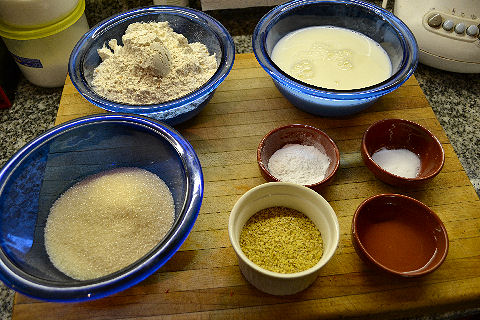
First off, our ingredients – 2-1/3 cups of coarse whole wheat flour (or, 2 cups of fine whole wheat flour plus 1/3 cup wheat bran), 1/3 cup of toasted wheat germ, 2 teaspoons of baking soda, 1 teaspoon salt (I’ve found the flavor to be better with a bit more than called for in the original recipe), 3/4 cup of raw sugar, 2 cups milk, juice of 1 lemon (unless you just happen to have a carton of soured milk around).
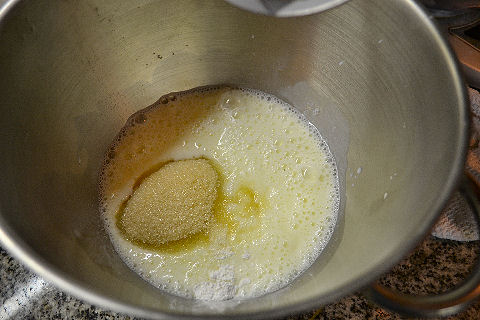
Add the lemon juice to the milk. Stir well and let sit for a few minutes until well soured and slightly curdled. Add the sugar. Mix well.
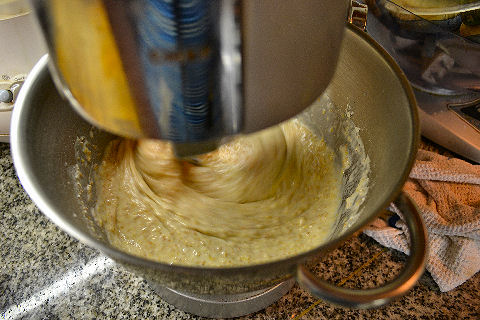
Add the remaining ingredients and mix well until you have a thick batter. I usually mix it on medium to high speed for about 2½-3 minutes, which helps develop the gluten and makes sure everything is well combined and the flour well hydrated.
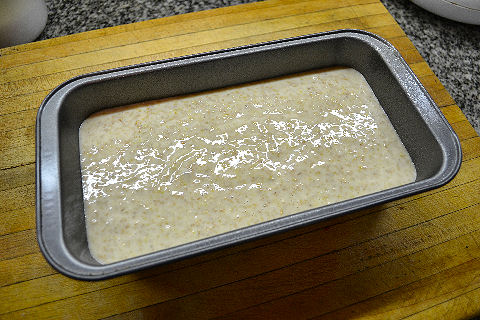
Pour into a lightly oiled or greased loaf pan, sharply rap the pan onto the countertop to release trapped air bubbles.
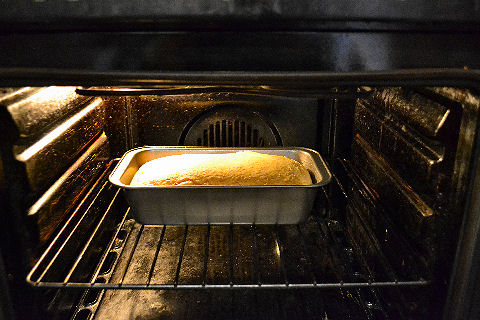
Pop it into a fairly low heat oven in contrast to most bread baking. Traditionally, this would be baked at only about 250°F/120°C, for a solid hour or even slightly longer. I tried to cook it a little hotter than that, but you have to be careful or the insides will burst out like molten lava once the crust sets…
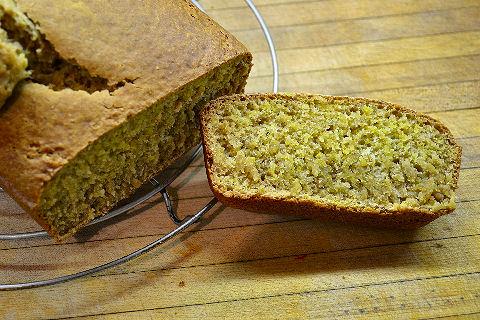
You can see I had it just a trifle too hot, I went at about 300°F and sure enough, the crust set, cracked, and the center bubbled out. I was hungry and wanted bread, what can I say? Ended up lowering the heat back down and it still took about 50 minutes to cook this way, so better to leave it at the lower temperature. This is just one delicious breakfast or brunch bread. Oh, you can eat it anytime of day, but it does have a fair amount of sugar in it, so isn’t one of the best as an accompaniment to dinner.